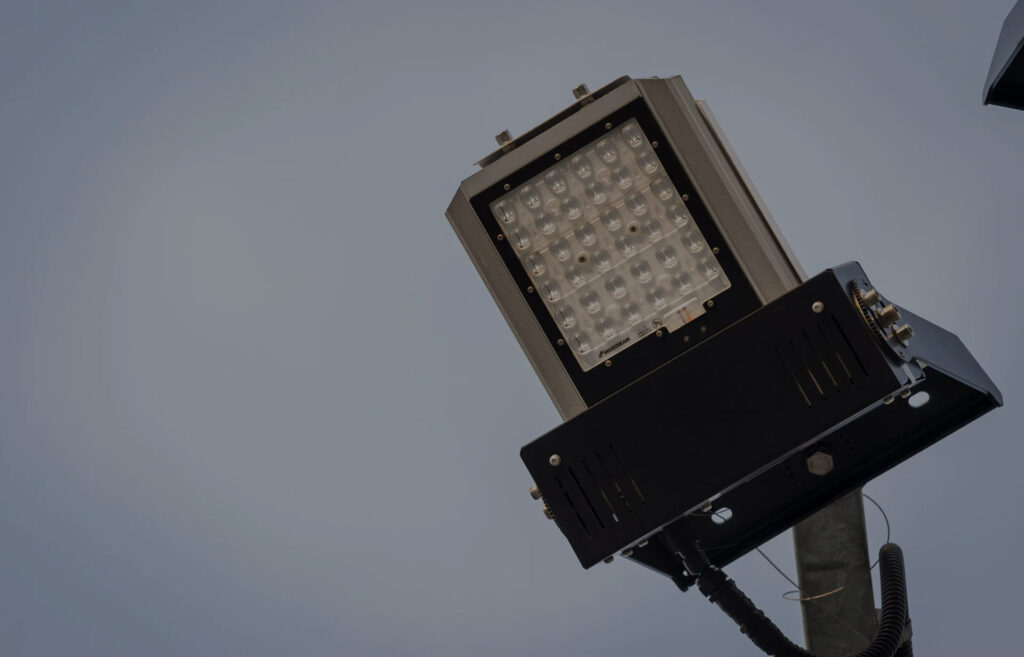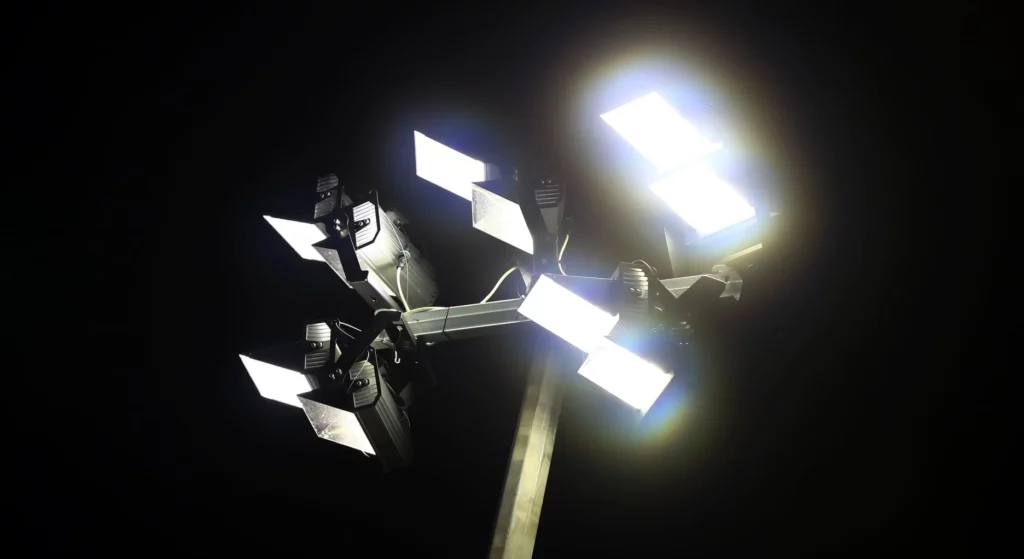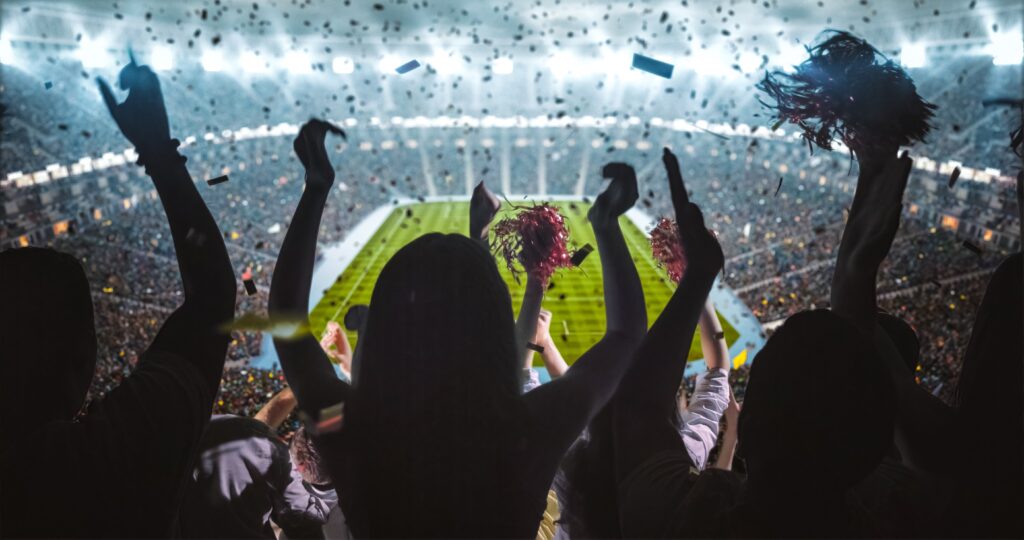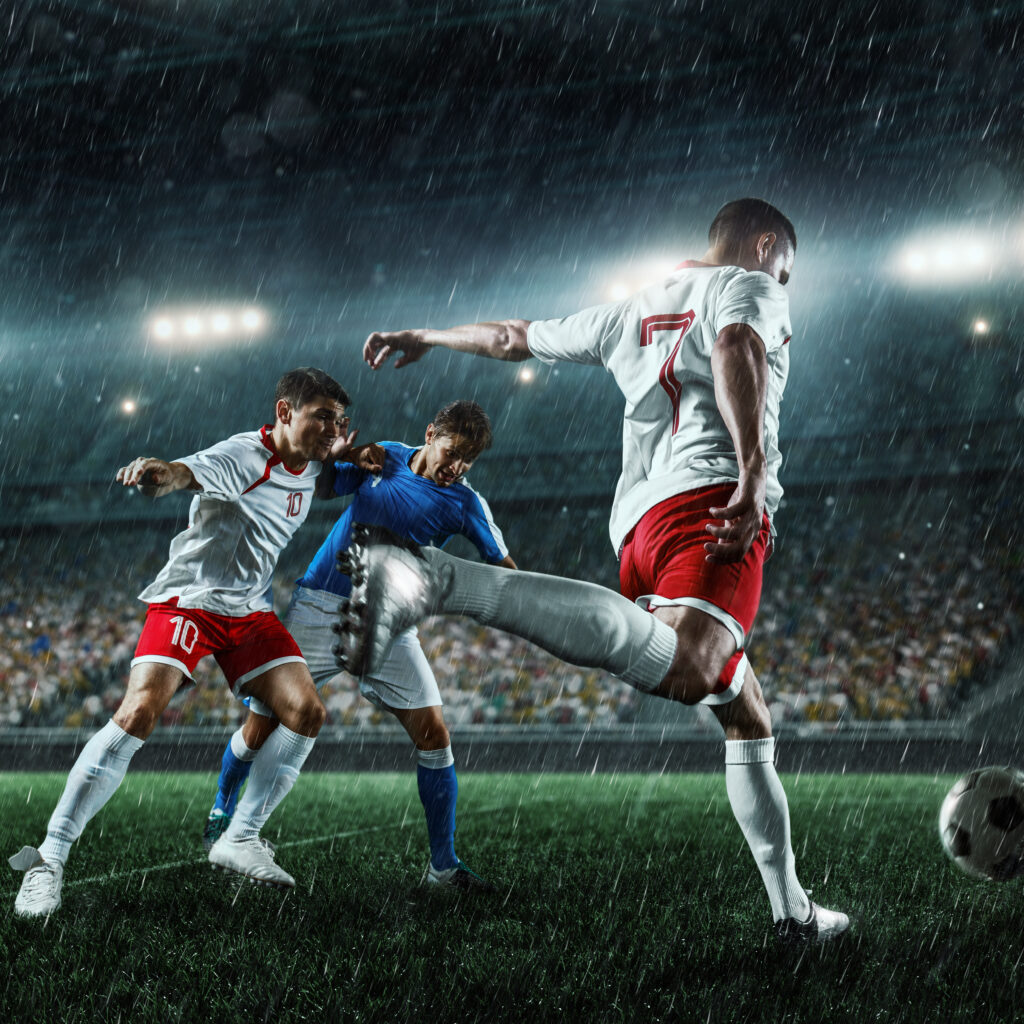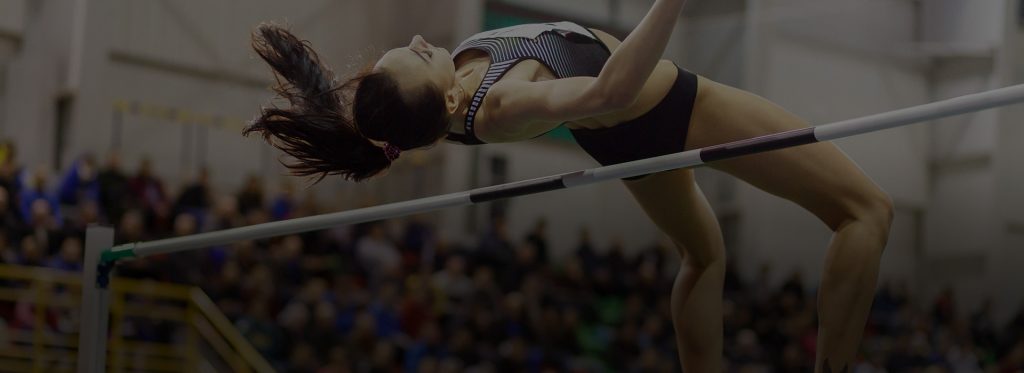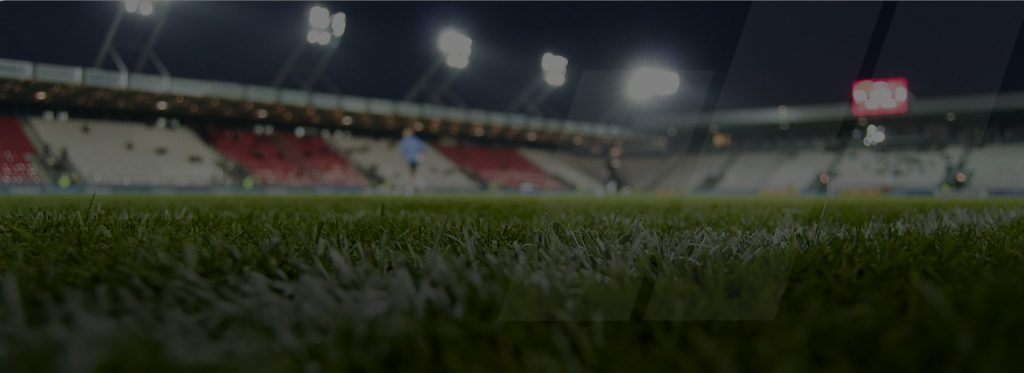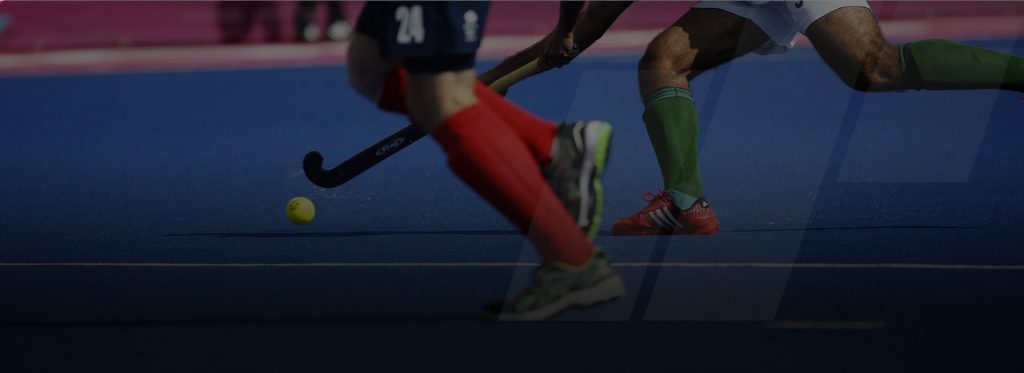Category: Sports
One of the many great things about our partnership with England Hockey is that we get to hear first-hand what some of its members are thinking when it comes to lighting. And while those issues vary from club to club, some questions come up time and time again.
In this post, Patrick Daly – Midstream’s National Sales Manager – shares his responses to some of the most frequently asked questions from clubs across the country.
Are LED-based lighting solutions expensive? Can we afford to switch to LED?
With the current situation regarding energy prices and inflation, a better question might be whether you can afford not to. With the energy price cap lifting again October, we’re seeing some clubs expecting their running costs to double. For those using outdated, inefficient floodlights like metal halide ones, the case for change is going to be particularly strong.
“It’s also important to know that the cost of LEDs has fallen considerably over the past five years or so. Like any new technology, LEDs carried a premium when they first hit the market. But we’re now well beyond the tipping point, and LEDs are both cheaper overall and a lot more cost effective than other lights over the long term too.
Will LED lights really save us money? When will we start to see a return?
Absolutely. On many of the hockey projects I’ve worked on – probably the majority, in fact – replacing metal halide lights with LED ones means the club has halved their energy use. As you can imagine, that has an enormous impact on cost. Maintenance costs for LEDs also tend to be considerably lower.
“As to how quickly you’ll see a return, that varies from club to club. As a general rule, hockey clubs tend to see a faster return on their lighting investments than other sports. That’s due to the fact that they use more floodlights overall, and that they use them more often – so the energy savings mount up quicker. It’s not uncommon for clubs to start seeing a return within the first five years of use.
My lights are not working in one corner. Do I really need to replace them?
Probably, but not necessarily. The key factor at play here is something that we call ‘uniformity’. In any sport, but particularly in hockey where the game moves quickly and the ball can be hard to see, you want good uniformity because that means there won’t be parts of the pitch where light levels fluctuate – something that can be bad from a safety perspective.
The best thing to do in this case is speak to an expert. At Midstream, we always work with existing infrastructure whenever we can, because it’s more cost effective for the club. So if you have some lights that are genuinely fine and – more importantly – up to the same standard as the new ones that we’d fit, then as long as the uniformity doesn’t suffer then they may be okay to retain.
How often do I need to have my LED lights maintained or cleaned?
With LED lights, this largely comes down to the manufacturer. With our LEDs for instance, we offer a 10 year guarantee that covers you regardless of whether you carry out maintenance or not. We know that clubs are busy, and we know that they don’t need the extra hassle of having to meet certain requirements just to keep their warranty active. Some manufacturers do insist that you sign up to a service contract in order not to invalidate your warranty, so that’s always worth checking.
How often you clean your lights really comes down to how invested you are in keeping them in peak condition. We always recommend that you try to clean your lights every 2-3 years to keep them performing as their best. If you’re going to do that regularly, consider opting for a base-hinged mast to make things easier.
Should I think about light spill when planning my hockey lighting?
Particularly in England where hockey pitches tend to be based in highly populated areas light spill can be a big concern for clubs. Light spill is mainly the result of using the wrong fitting, or not using dedicated sports lighting. With purpose built lighting solutions, there are plenty of ways to ensure that they only illuminate what they should – cowls, shielding, hoods, mast height, and even fencing where necessary.
One of the other issues here is ecology, and specifically bats. As a protected species, there are lots of restrictions placed on anything that might disturb their habitat. For clubs with an existing lighting solution in place though, something dramatic would had to have changed between that previous installation and the upgrade for planning not to be granted. And we actually help a number of clubs through the planning process, too.
Should I think about light spill when planning my hockey lighting?
Particularly in England where hockey pitches tend to be based in highly populated areas light spill can be a big concern for clubs. Light spill is mainly the result of using the wrong fitting, or not using dedicated sports lighting. With purpose built lighting solutions, there are plenty of ways to ensure that they only illuminate what they should – cowls, shielding, hoods, mast height, and even fencing where necessary.
One of the other issues here is ecology, and specifically bats. As a protected species, there are lots of restrictions placed on anything that might disturb their habitat. For clubs with an existing lighting solution in place though, something dramatic would had to have changed between that previous installation and the upgrade for planning not to be granted. And we actually help a number of clubs through the planning process, too.
Do we have to replace our masts if we upgrade to LED?
This is an interesting question because the answer can vary based on the floodlights you choose. There’s a general perception that LED floodlights are big, heavy objects that need specific masts to support their weight. And, in a lot of cases, that’s true – which means that the club needs new masts as well as new lights.
The way that we build our LEDs at Midstream, though, means that they’re designed to mirror the size and weight of the luminaires that most hockey clubs already have. That means that we’re much more likely to be able to carry out what’s known as a ‘retrofit’ solution – one where we can retain the masts and just install new floodlights. For reference, that can save as much as 50% of the cost on a typical project.
Do sports LED lights come on instantly?
Yes they do, and that’s another good reason to switch from metal-halide floodlights. Once you switch a metal halide light on, it can take about 20 minutes to get up to its full lighting level, which is a waste of both time and power. What’s worse is that if you accidentally switch that light off, you then need to wait the same amount of time while it warms up again.
There are two other advantages here as well. Firstly, if your venue has a pitch that you hire out, you can just switch the lights off when there’s a gap between bookings. Alongside that, LEDs can also be dimmed for other sports that may not need as high lighting levels. Both of those things can help to save you money
Do we need to get our facility rewired for LED lighting?
In the vast majority of cases, you don’t. Because we’re typically reducing the amount of power needed to run a club’s lighting system, the cables they already have tend to be suitably sized to take new LEDs without any problem. All we normally need in that instance is an up to date Electrical Installation Condition Report (EICR) provide by an electrician to ensure that everything is as it should be. If clubs don’t have an EICR we can recommend a local electrican.
Generally, the only time this really becomes an issue is when a club is completely rethinking what they want their lighting to do for them. If they want to massively increase their lighting levels for instance, and they’ve only had relatively low-power solutions so far, they might need to look at some element of rewiring.
Green is the colour: exploring environmental initiatives in football stadiums
You don’t need to be an energy consultant to know that modern sports venues are fairly power-hungry buildings. Even a cursory look at the layout of a typical stadium would be enough to suggest that the monthly electricity bill might be a touch on the high side – particularly now, with energy prices skyrocketing as a result of increased demand and global uncertainty.
From sports lighting and scoreboards to behind-the-scenes facilities like catering and broadcast, even an average sized stadium now burns through a lot of power. That’s particularly true in the case of football stadiums, which tend to be both some of the largest sporting venues and amongst the most frequently used. Some estimates suggest that a large football stadium uses as much as 25,000 KWh during a single 90 minute match – the same amount as eight and a half UK homes do in an entire year .
As much as that has an implication in terms of cost, there is of course another very critical issue at play here: sustainability. Expensive though it might be to power a stadium over the course of a game, the long-term cost to the planet is even greater still. It’s with that concern in mind that a growing number of clubs have been introducing green initiatives designed to reduce – or at least mitigate – the amount of power that their venues use.
In this post, I’d like to highlight some of the most noteworthy green initiatives in football stadiums around the world – including some smart approaches to sports lighting and power.
Chelsea take the points, but it’s Game Zero that matters at the Tottenham Hotspur Stadium
Local derbies are always heated affairs, particularly when the teams involved are competing for one of the coveted Champions League spots. While passions may have been running high on the pitch during Tottenham and Chelsea’s clash last year though, the environmental cost of the game on was at a record-setting low.
On Sunday 19th September 2021, the Tottenham Hotspur Stadium hosted “Game Zero” – the world’s first net zero carbon elite football match. As is now common in many carbon neutral (and carbon negative) strategies, that result was achieved by first lowering emissions as much as possible, and then offsetting anything that couldn’t be eliminated in its entirety.
In practice, this involved a number of smaller initiatives coming together at once. Players arrived on green biodiesel-powered coaches, fans were encouraged to walk or travel using electric or hybrid vehicles, and all facilities at the stadium – including the sports lighting – were powered by 100% renewable energy. Chelsea may have run out as 3-0 winners on the day, but the long-term legacy of this game is likely to be remembered for very different reasons.
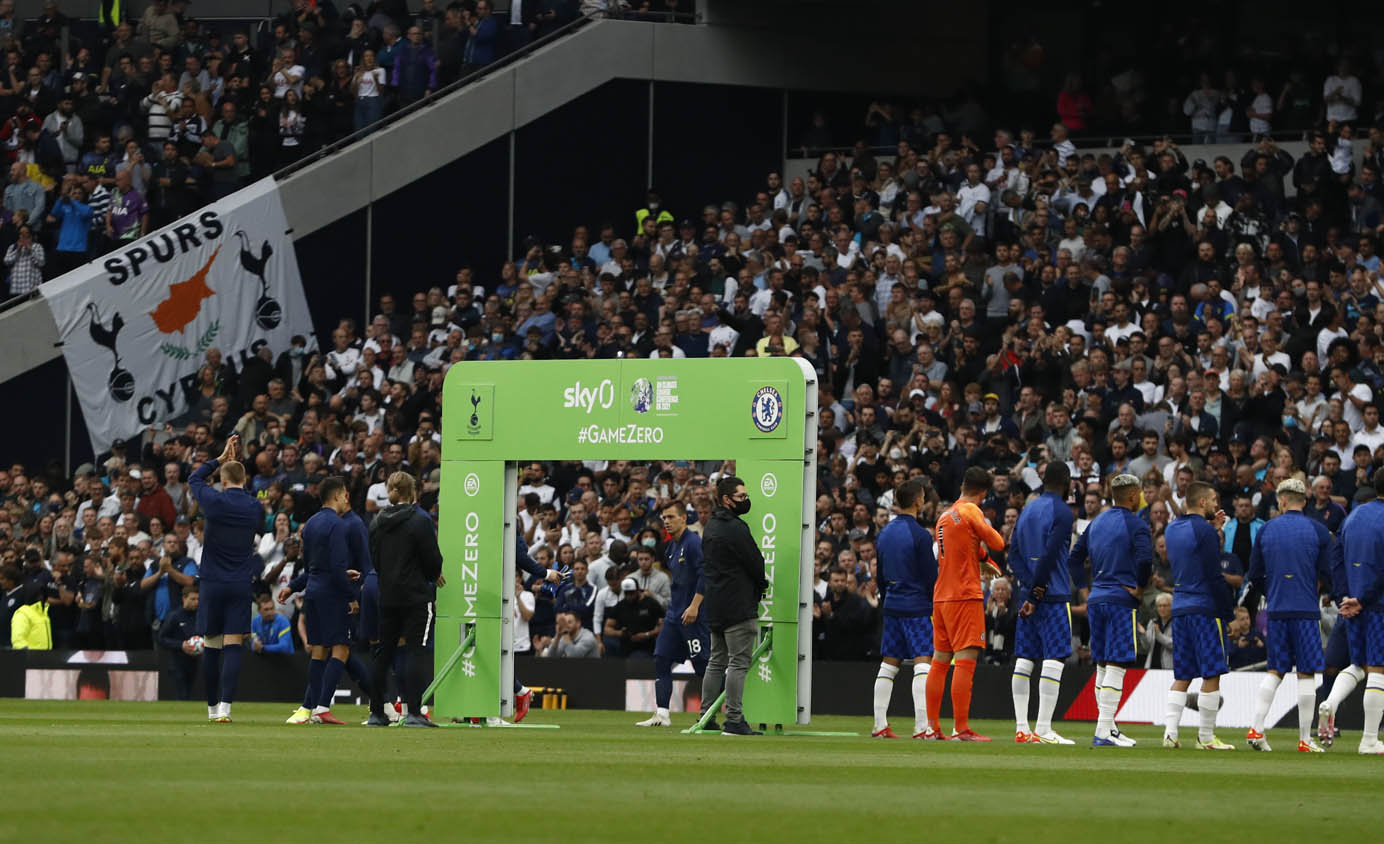
Forest Green Rovers pitch a different future for football
From the top of the table to the lowest division in the English League – though there’s little doubt that Gloucestershire’s Forest Green Rovers (FGR) could teach some of their higher flying counterparts a few things about sustainability. In 2017, governing body FIFA recognised FGR as “the greenest club in the world”, and it’s easy to see why.
For starters, while Game Zero may have seen renewable energy used for one specific match, FGR’s New Lawn stadium runs on it full time. The club uses 100% green energy (some of which is generated from solar panels installed on the stadium’s roof), its pitch is treated entirely organically, and the grass is even cut using a solar-powered lawnmower. “Another way” indeed.
Ajax challenge the status quo at the Johan Cruijff Arena
On the pitch, Johan Cruijff was known for inventing the eponymous “Cruijff Turn” – a twisting manoeuvre that left his rivals in his wake. It’s only fitting, then, that the stadium that carries the Dutch legend’s name is now recognised for its similarly revolutionary qualities.
Proving that solar panels aren’t just for the likes of Forest Green, Ajax’s Johan Cruijff ArenA employs 4,200 of the devices around almost the whole of the stadium’s roof. What’s more, the club has created a storage system that includes hundreds of new and recycled Electric Vehicle batteries – meaning that it not only has backup power in the event of an outage, but that it can actually supply energy back to the Netherlands’ national grid in times of high demand .
Of course, it would be remiss of us not to mention that the ArenA also uses a highly efficient LED sports lighting solution , as well as an accompanying grow lighting rig that helps to keep the pitch in peak condition.
Betis and Athletic go all in for Forever Green
Let’s finish off with one of the most recent examples of sustainability in action. In an effort to raise awareness of the club’s ongoing Forever Green initiative, Real Betis’ match against Athletic Club last month served as a scintillating showcase of sustainable sport.
First up was a change to the club’s first-team kit, with a revamped design made using 100% recycled polyester. This is no token gesture or PR stunt, either; Betis’ has actually made the shirt available for sale in the club shop. Joining it are a set of Forever Green trainers (or sneakers), made entirely from sustainable and recycled materials.
For the game itself, the club arranged a series of discount offers with electric bike company Lime, as well as electric scooter firms Acciona and Voi, all in a bid to encourage environmentally friendly travel. Those who opted to travel using their own e-bike or scooter were given their own designated parking space as a reward.
On the pitch, players drank from recycled water bottles, while watching fans were able to grab their halftime snacks in biodegradable bowls, before dropping them into recycling bins for their eventual transformation into fertiliser. With one Euro from every ticket sale donated to a reforestation project, the club also made a commitment to offsetting the carbon emissions from the game.
For Betis, green clearly means much more than just the colour on their shirts.
Can we realistically expect every match to live up to the amazing example set during the game between Betis and Athletic? Maybe not, but the great stories above do at least give me hope that we’re headed in the right direction.
If you’re interested in maximising the sustainability of your own stadium, you should know that an LED sports lighting solution can have a dramatic impact on reducing the amount of energy that you use. Find out more here, take a look through some of our case studies, and get in touch.
No matter the sport, and no matter the level of ability, lighting is now a significant consideration for stadiums of all kinds. Irrespective of whether it’s the final of the FIFA World Cup or a lower-league tie on a frosty Friday night, the quality of a stadium’s lighting goes a long way to dictating the quality of the experience for viewers, fans, and athletes alike.
Not all sports lighting is the same, of course, and even similar products from a single vendor can produce very different results when employed ineffectively. In this post, we’re taking a look at the subject of sports stadium lighting and offering some key tips on how to maximise the success of your own solution.
Why good lighting matters
The important word here is “good”. Almost any floodlight manufactured within the past couple of decades will be capable of illuminating a stadium environment to some degree – but that doesn’t mean that the quality will be at an appropriate level.
What is “appropriate” can change dramatically depending on the venue but, broadly speaking, there are three overarching issues to take into account when thinking about lighting:
- Is the solution you’re using going to be sufficient for your athletes or players? Will they be able to operate at the same kind of level that they would in natural daylight?
- Does that system give spectators what they need in terms of visibility? Can they see what’s happening on the track or field clearly, no matter where they’re sat?
- Is your stadium well-lit enough to ensure the safety of competing professionals? This is particularly important for fast-moving and contact sports.
These are all crucial factors to address when evaluating your lighting needs.
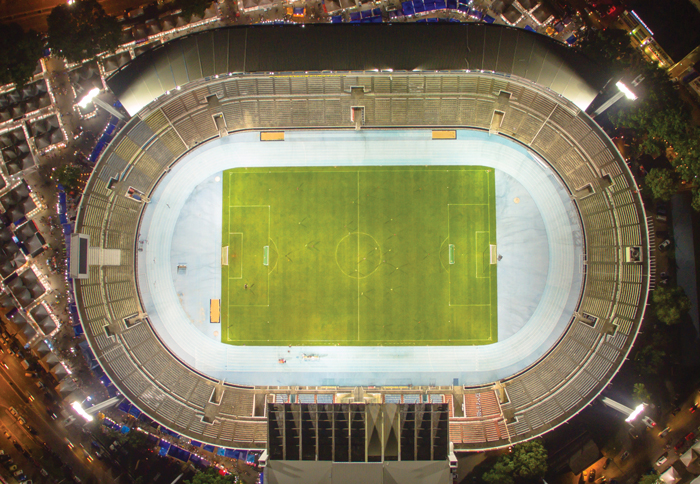
Televised sport adds another dimension
In addition to the above, and where relevant, it’s important to consider broadcast coverage. In the last decade in particular, certain changes in regard to sports broadcasting mean that some stadium lighting solutions need to meet very specific requirements. With slow-motion and UHD video now commonplace, high power, flicker-free lighting solutions need to be in place in order to give the cameras what they need.
Even at lower levels, the proliferation of livestreaming means that many teams and venues have an entirely new way to connect with fans, particularly those who are located some way away. Good lighting can help to facilitate that connection.
LEDs offer a perfect solution for sports lighting needs
The lights used in modern stadiums come from a wider category known as “sports lighting”. The majority of stadium lighting systems being manufactured today use LEDs (Light Emitting Diodes), though some vendors do still build their lights using metal halide lamps. These lamps are an increasingly outdated form of technology, and one that has been proven to be far less energy efficient than LED.
Because they need to illuminate large areas, stadium lights usually rely on very high power LEDs. At the highest grade of the soccer stadium lighting regulations outlined by UEFA, for instance, horizontal lighting levels need to be 1,400 lux or above. That’s more than 10 times the amount that the FA stipulates for the majority of games in the National League.
Positioning has a big impact on quality
To deliver the best lighting levels possible, stadium lights also tend to be affixed to either a stand or a mast, typically mounted between 40 and 60ft above the ground – though, at bigger venues, it’s not uncommon to find lights as high as 100ft. Common mast configurations usually include one in each of the four corners, with either one or two masts running down each of the sidelines for a total of six or eight respectively.
Because of the distance between the light and the pitch, small beam angles of between 12-60° are used to keep the light focused and intense. The actual type and number of luminaires (individual floodlight units) required normally depends on the specific circumstances of a stadium, and the sport being hosted there.
Lighting requirements can differ drastically between sports
While lighting layouts between stadiums often have a lot in common, there’s no “one-size-fits-all” approach – particularly between different disciplines. Much of the variance comes down to the nature of the sport itself; in hockey, for instance, the pace of the game and the size of the ball demands a standard of illumination that wouldn’t necessarily apply on a football pitch.
If you’d like to learn more about some of the specific stadium lighting considerations across different sports, why not take a look at our dedicated pages below?
Power usage varies, but can be predicted
For a stadium lighting solution to be as effective as possible, it needs to be designed with an actual venue’s requirements in mind. Take a football stadium as an example: there can be corner lighting, side lighting in both six and eight column configurations, and even grandstand lighting. Ultimately, the layout needs to work with that stadium’s specific needs.
Because of that, there’s no single answer to the question of how much power stadium lights will use. It’s a variable, and one that can change from stadium to stadium and even country to country depending on energy prices. That said, there are two things to consider when it comes to lighting costs.
Firstly, energy costs can always be predicted using a fairly basic calculations. Take the total number of luminaires and multiply that by the amount of energy that one luminaire requires (i.e. 1.18kW). Multiply the result by the current per hour kW rate (i.e. £0.20) and then, finally, multiply that value by the number of hours that your lights run for in an average year. That will give you a fairly reliable forecast of your annual running costs.
Secondly, and as mentioned above, LED lights offer many advantages over older options like metal halide. Not only are they cheaper and cleaner to run overall, they can also be switched on and off instantly, meaning they can be powered down between matches or events. LEDs are also dimmable, so they can be run on a lower power setting when circumstances allow.
Help is often available
One last thing to bear in mind when it comes to cost is that many sports governing bodies – particularly in the fields of football, rugby, and tennis – now offer grants as a way to help fund new and more energy-efficient stadium lighting solutions.
At Midstream, we’ve helped a number of our sports customers around the world apply for and secure funding for their LED stadium lighting upgrades, so it’s a benefit that’s well worth exploring if you’re looking to take your own venue to the next level.
You know something has truly gone wrong when people remember an event not by it’s official title, but by the technical hiccup that sent it off course. A little under a decade ago, Super Bowl XLVII took place at the Caesars Superdome in New Orleans. And as the San Francisco 49ers got the game underway, no-one watching could have guessed that it would eventually come to be known by a different name: the “Blackout Bowl”.
At around the 13 minute mark in the third quarter of the game, a power outage at the Superdome threw the biggest match of the American Football season into darkness. With players on both teams looking inquiringly to the sidelines, and coaching staff scrambling to find out what was going on, the game was suspended – leading to an unprecedented 34 minute long break in play.
The Super Bowl isn’t the only sporting event to have fallen victim to a blackout in recent times. Tottenham’s 2014 Europa League game against Besiktas was stopped after just eight minutes when the floodlights failed. Last year, England’s World Cup qualifier in San Marino was nearly abandoned as the result of another power outage. And just last month, Watford and Norwich’s Premier League clash was suspended for more than 10 minutes due to floodlighting issues.
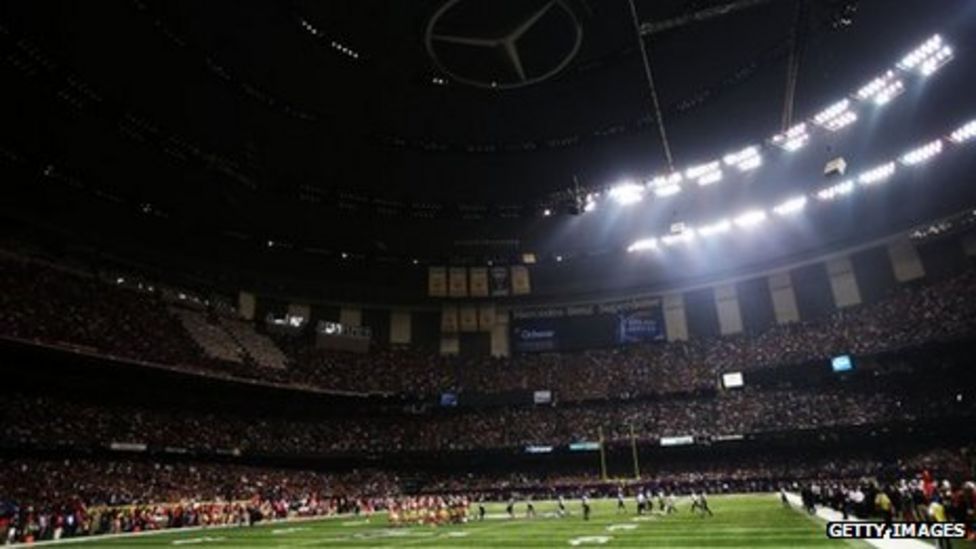
The interruption of a game or sports event due to lighting failure has a number of ramifications. First, there’s the issue of reputational damage. In today’s hyperconnected world, it takes seconds for bad news to spread, and a seemingly infinite amount of time for it to fade away.
While many were quick to praise the likes of Oreos for spinning the Super Bowl blackout into cute social media content for instance, others were less appreciative of the limelight. Doug Thornton – an executive at Superdome management company SMG (now ASM) – told Sports Illustrated that “even though it wasn’t our fault, it became our problem… the whole thing bothered me for months .” For years, perhaps decades to come, casual fans will likely remember the Superdome as the home of the Blackout Bowl.
Then, of course, there’s the financial impact of a lighting outage. Some estimates suggest that the 34 minute delay in 2013 cost around $2-3m in terms of lost revenues, though that’s both unverified, and quite obviously at the extreme end of the scale. Generally, it’s difficult to put an exact number on a lighting-related delay due to the huge number of factors involved.
Nonetheless, sports venues do need to think about the potential costs of a lighting failure – which can range from fan compensation through to the deterioration of commercial relationships.
In 2016, for instance, a group of Bournemouth fans demanded reimbursement from Manchester United after their game was cancelled due to an erroneous security threat. One year before, Brentford F.C. actually acceded to a similar request, compensating Birmingham City supporters for their travel after a match between the two was called off at short notice. Fan tolerance for being sent away with the promise of free readmission for a replay seems to be at an all-time low.
It’s easy to understand why. Delays to the completion of a sporting event can be hugely disruptive in terms of travel, particularly for fixtures that take place during the middle of the week or late on a weekend. Replays might be arranged for a time that’s no longer convenient for them. And any unscheduled interruption, no matter how slight, can fundamentally divert the flow of what might otherwise have been a scintillating competition.
And then, there are the athletes to consider. The introduction of the Video Assistant Referee (VAR) into football has reignited the debate about the impact of interruptions in play. After Liverpool’s midwinter game against Midtjylland was delayed by 10 minutes due to VAR checks in 2020, manager Jürgen Klopp bemoaned the fact that “each review was really long and it was really cold for the boys .”
No amount of training can prepare a player for 10 minutes of inactivity in freezing conditions, of course. And even in normal circumstances, interruptions can dramatically affect player performance – a 2018 study of games in Germany’s Bundesliga found that more than half of the decline in player performance over the course of a match can be attributed to interruptions rather than physical exhaustion .
While it might not be possible to put a specific financial cost on interruptions, all of the evidence suggests that there are very real consequences when play gets delayed or abandoned. And though lighting might be only one of the factors that can play a role in disruption, it’s also one that sports venues have a great deal of control over.
Ensuring that those lights stay on, and that it’s what happens on the pitch that makes the headlines, is in everyone’s best interests.
Is your floodlighting promotion-ready?
It might only be January, but – at football clubs across Europe – thoughts will already be beginning to turn towards the end of the season. And while it might not be possible to predict exactly who’s going to win what, we can at least get a decent idea of which teams will be fighting for promotion come the spring.
As exciting as that is for supporters, for clubs themselves it’s the start of what can be a long and technical journey towards the next level – one that’s often as much about what happens off of the pitch as what happens on it.
Let’s take the English football league as an example. The pyramidal structure here sees the Premier League at the top, followed by the Championship, League One, League Two, and then the National League and its numerous sub-divisions. Whenever a club gets promoted, it needs to demonstrate that its ground meets the requirements of the league it is stepping into.
These ground grading requirements cover a variety of issues, ranging from seating capacity and pitch boundaries through to the PA system and, of course, lighting. Lighting standards are critical to the modern game, not just because they create a better environment for players and supporters, but because they provide TV networks with the right visual conditions for great broadcast coverage.
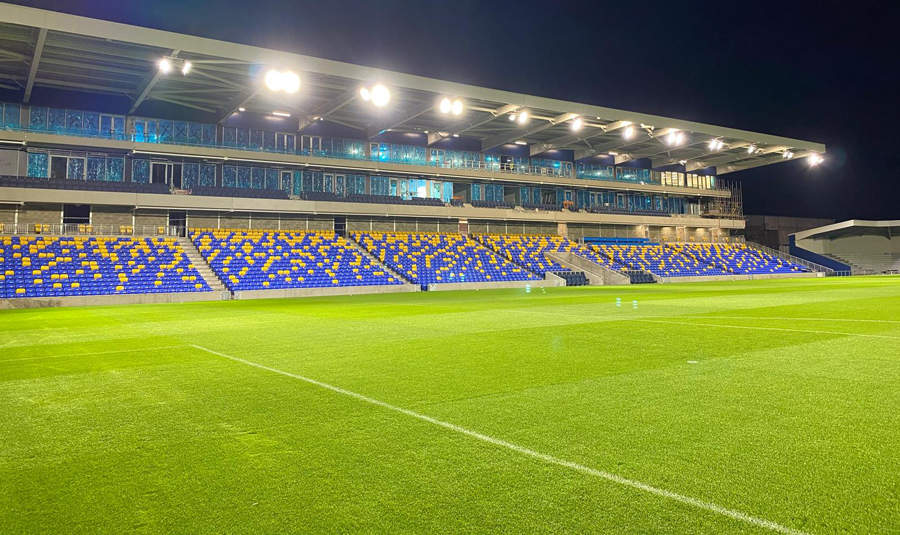
The higher a club goes, the more stringent the lighting requirements become. And while the difference in what’s needed between the National League and the National League North might be relatively slight, the increase in brightness required when a club goes from the National League to League Two can be as much as 70%. That’s a considerable jump, and one that has implications that go beyond just the luminaires themselves.
Generally, there are three lighting-related issues that a club needs to consider when promotion is on the table: their existing infrastructure, their current power arrangements, and planning.
- Infrastructure
For clubs making the climb from the lower leagues, this will be one of the primary concerns. High quality football floodlighting requires a specific combination of masts and fixtures, and while clubs at certain levels will be able to reuse or upgrade their existing facilities, some will need an entirely new installation. Naturally, that has a significant impact on planning. - Power
A ground’s electricity supply can present a similar challenge to the above, albeit one that is more widely applicable. Football stadiums don’t tend to have any spare capacity when it comes to power, meaning that they use up everything they can draw down. At the same time, the increase in brightness required in the example above would also demand around 80 Amps of additional power – so clubs need to be sure that they can ramp up supply when they need it. - Planning
Any significant change to a football club’s facilities will need to be approved by the local planning authority. While this may be less of an issue for grounds that occupy a dedicated space – like many of those in the Premier League, for example – clubs situated in or near to residential areas will need to show that they’ve taken factors like light spill into account when upgrading their lighting.
So, why does all of this need to be thought about in January when most domestic leagues don’t finish until May? Primarily because all of these factors have a major impact on the timeline for a new lighting installation.
Planning alone can take as long as 16 weeks, so even if the documents were submitted on January 1st, it’s not unreasonable to assume that sign-off wouldn’t take place until around mid-April. From there, any changes to the stadium’s infrastructure could take around a month, landing us in the middle of May. With around six weeks needed to build the floodlights, and four weeks to install them, that takes us to the first weekend in August – just when many leagues will kick off once again.
Ensuring that all of the above goes as smoothly as possible is clearly vital, and it’s important for clubs to get the right support in terms of planning and design so that they can prevent any unforeseen issues from arising.
Then, of course, there are the issues of cost and efficiency; many clubs operate on extremely tight budgets, and will want to ensure that they’re getting the best possible performance at the best possible price. While any upgrade from metal halide to LED lights is likely to offer considerable reductions by default, the right expertise at the design stage can help to identify additional cost-saving opportunities.
Finally, there’s the matter of future proofing. While year-on-year promotions are admittedly rare, it does make sense to think about tomorrow’s lighting requirements when planning any upgrade – just ask Midstream Lighting customer AFC Wimbledon. It might involve a slightly higher outlay in the first instance, but a forward thinking approach to lighting can ultimately save money in the long term.
There’s a long way to go between now and May. But just as any supporter will tell you that it’s never too early to start dreaming, it’s never too early to start thinking about next season’s lighting either.
